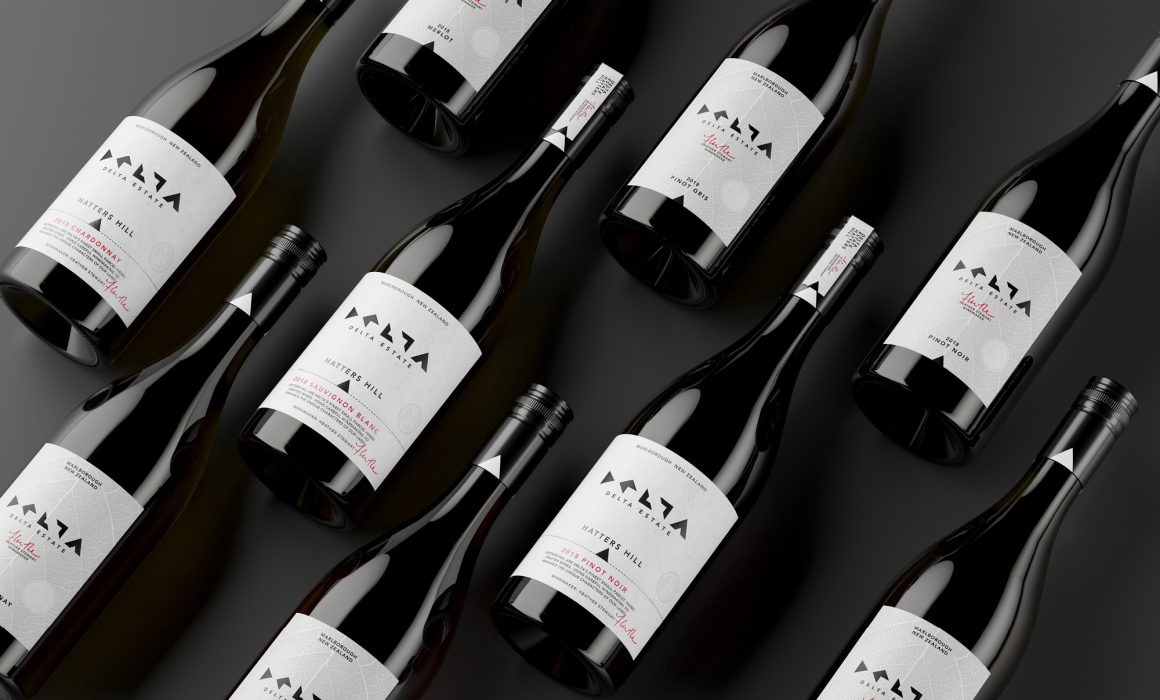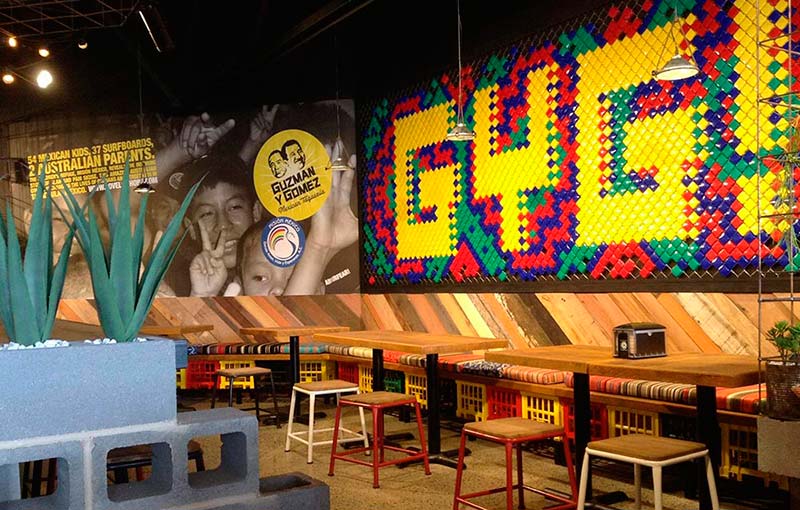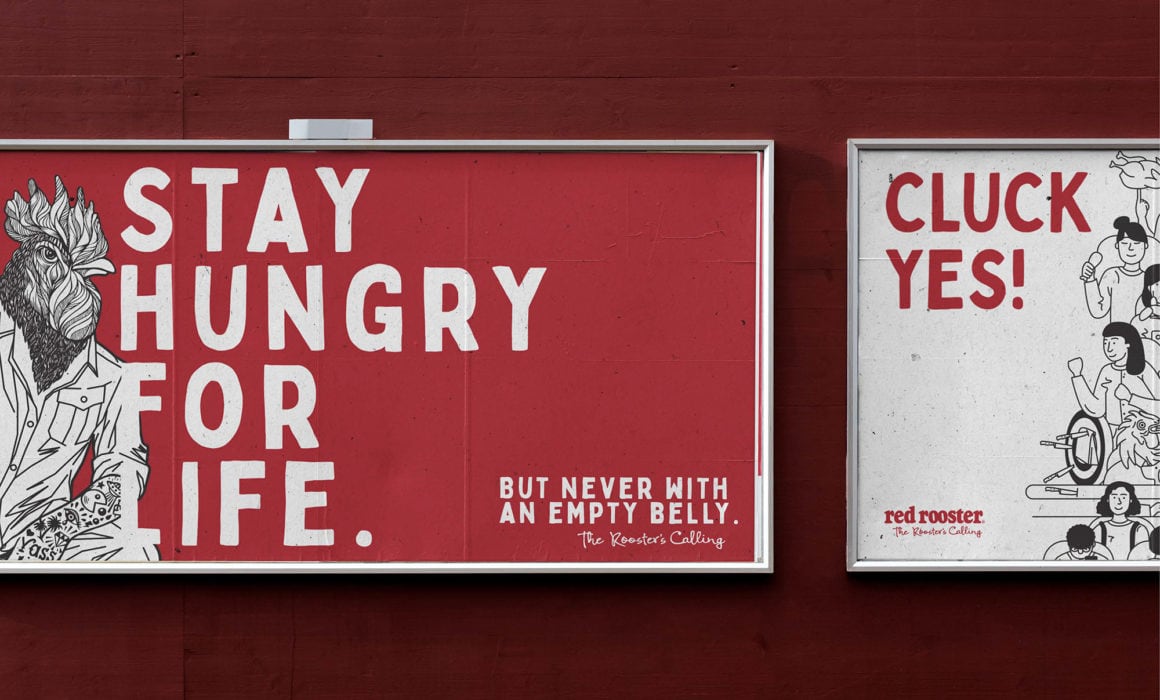How to Develop a Successful Wine Branding Strategy
Branding
How to Develop a Successful Wine Branding Strategy
11 October 2021
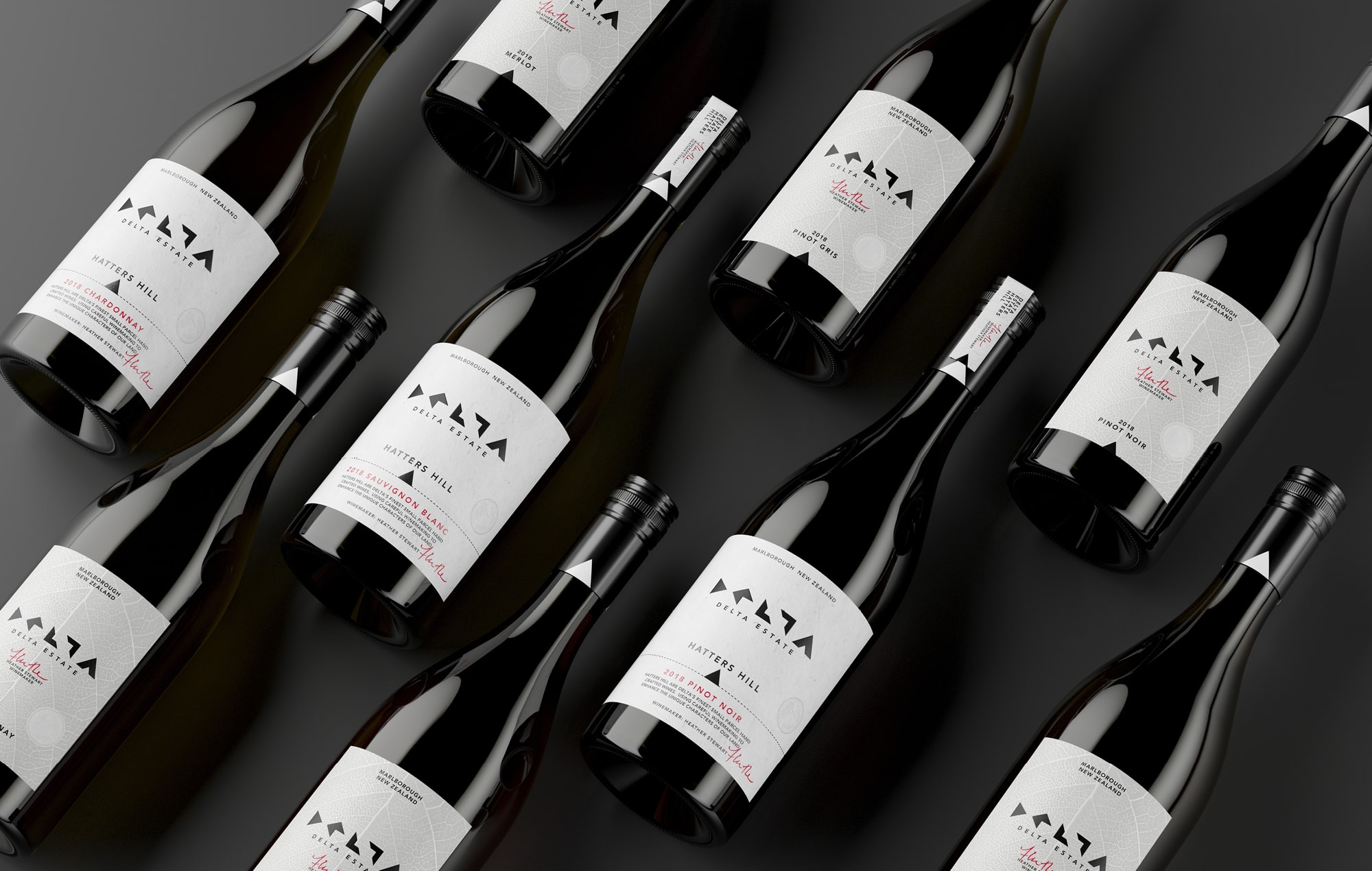
With more and more wine brands and wineries popping up every year, whether you’re a newbie with a passion for winemaking or run a multi-generational family estate, it’s time to face facts: running a successful business in the wine industry is no longer just about selling good wine. As the shelves get more crowded, the importance of having packaging design that cuts through to the consumer only increases. Next time you take a stroll through the aisles of your local liquor store, consider the bottle design of your competitors. There are certain wine labels that will leap out at you, capture your attention and excite your curiosity. This is successful wine branding strategy at work, each element working in perfect harmony to create a product that you cannot ignore. So let’s crack open a bottle (see what we did there?) and discuss how to take your wine from anonymous to acclaimed.
#1: Define Your Identity
In a market full of world-class wines, you need to find a way to stand out from your competition. This is where your brand identity comes into play. Without a strong and distinctive wine brand, you could have the best quality wine ever made and still get left on the shelf. Customers respond to products that they connect with emotionally, and companies that strive to show their human side. This emotive connection is how you turn a consumer into a loyal customer, and the most effective way to achieve this connection is through the creation and maintenance of a unique brand identity.
Establishing A Meaningful Wine Brand
Take it from us – the last thing you want is for customers to be ambivalent about your wine. As consumer choice increases, people are making more informed decisions about what products they buy, decisions based on the values of the businesses which provide them. Your wine branding should be meaningful, and by that we mean stand for something more than just selling a good product. Are you a family-run vineyard trying to keep old traditions alive, or a young company looking to shake up the market? Are you passionate about local winemaking, sustainable techniques or experimental flavours? Discover what drives you, and the right audience will respond.
#2: Understand Your Audience
A successful wine branding strategy relies on knowing your target audience inside out, from their age and their socio-economic bracket to what they like to do in their spare time. Just like beer branding, targeting a generic audience of ‘wine drinkers’ is no longer a viable marketing tactic. As the market continues to diversify, you need to identify your ideal customer and work to lock in their loyalty. But how? Your product might answer that question for you – blush and sparkling wines tend to appeal to a youthful crowd, while red wines have an association with sophisticated, professional types. How your rival winemakers position their brands can also reveal gaps in the market.
How Do Consumers Decide What To Drink?
A recent study of consumer purchasing behaviour for wine found that customers tend to rely on ‘extrinsic cues’ to determine product quality, as they usually aren’t given the opportunity to taste different wines before purchase. These extrinsic cues include the brand name, price and packaging, crucial elements of your wine brand identity. Wine labels not only offer customers essential information about region and grape variety which influences their decision to purchase, but can also make your product more attractive to a certain demographic. Engage younger buyers with modern, innovative label designs, or draw in older consumers with more traditional packaging.

Saint Clair Family Estate uses rustic, handcrafted design cues in its Pioneer Block packaging to appeal to buyers looking for top quality, small parcel wine.
#3: Captivate With Creative Packaging Design
Now we get into the really fun stuff – crafting a distinctive visual look for your brand that will catch the eye of your ideal customer. Since we know that wine labels are such an influential factor when it comes to consumer choice, designing packaging that best represents your brand should be at the top of your priority list. Once again, knowing your target audience is vital here to create wine branding that connects and sells. Like food packaging, wine labels have limited space to communicate both key product details and persuade people to choose your wine over the fifty-odd alternatives on the shelf. Smart food packaging design makes intelligent use of this available space. Your wine should do the same.
What Makes A Wine Bottle Leap Off The Shelf?
When it comes to packaging, our philosophy is simple – aim to disrupt. A bold design is a memorable design, and your creative vision doesn’t have to stop at the wine label. Little details like the shape of the label itself, colour selection and brand blocking can create a striking first impression for potential buyers. You should also take into account the variety or varietal when designing; certain colours, fonts and imagery will naturally complement particular types of wine. Remember that you want wine branding that not only captivates, but endures. With clever packaging, you can create an instant classic.
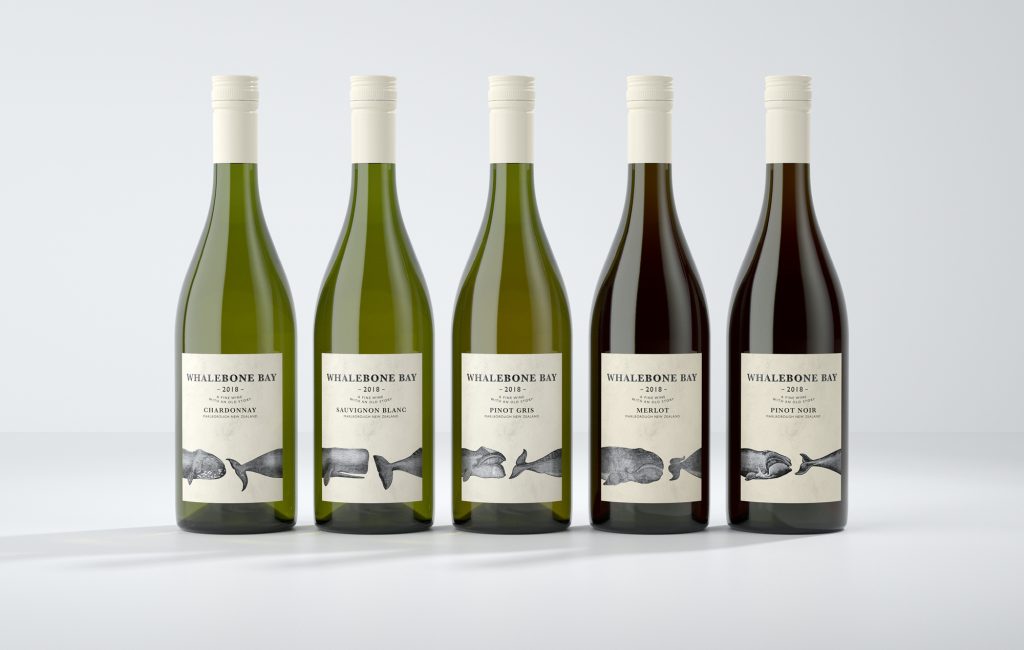
Each varietal of Whalebone Bay features a different type of whale that creates the illusion of whales swimming swims across the shelf.
#4: Tell Your Unique Story
If the packaging design is the driving force behind your wine branding strategy, then your brand story is the heart. We’ve been in this game for a while, working with some of the best food and beverage brands in the world, and one important thing we’ve learned is that customers respond to brands that share their personal stories. Think about it – in this golden era of e-commerce and digital marketing, we get bombarded with advertising all the time. Out of necessity, consumers have become adept at blocking out the noise; only those brands which affect people on an emotional or individual level cut through. And the most effective way to create that genuine connection with your customers is through storytelling.
Finding Your Authentic Brand Voice
Not sure if your personal story is compelling enough to build an entire wine brand identity around? Don’t panic! Above all, consumers want companies to be authentic, not pretentious. People respond to honesty, humour, warmth and humanity. Inviting your customers to participate in the ongoing story of your brand is a brilliant way to forge a lasting connection. Great brands are built on great stories, so start sharing yours. And remember: in vino veritas – don’t be tempted to fabricate or embellish your brand story to outdo your competition. You could lose the trust of your customer base in the process.
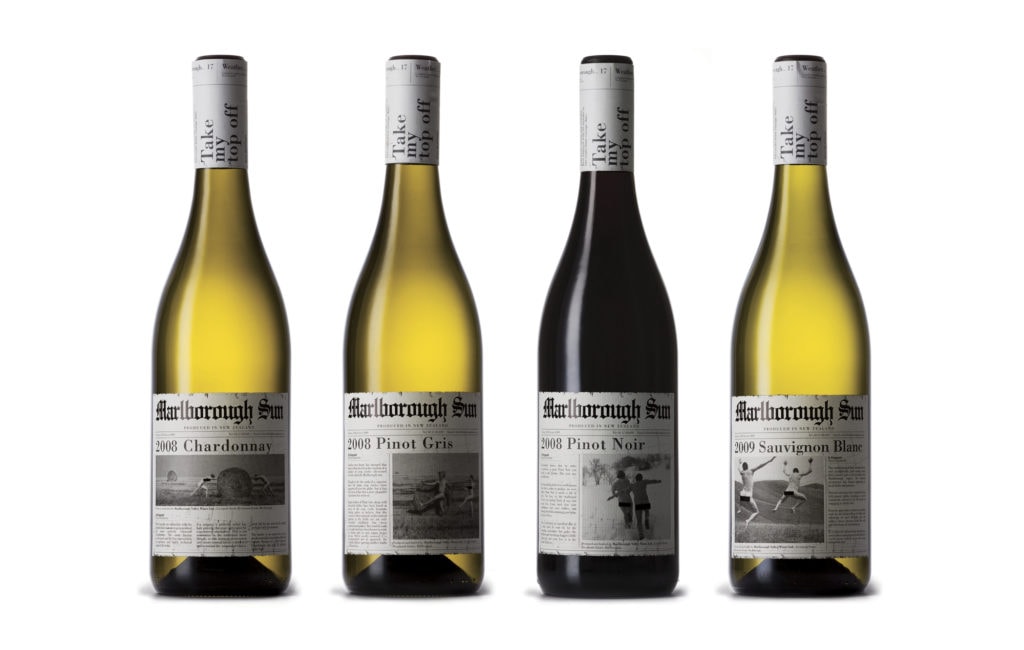
How do you tell the story of grapes grown in the region that receives the most hours of sunlight in the world? With nudity of course! Marlborough Sun embraces its brand story and tells it in a unique way.
#5: Consolidate Your Brand Identity
Although it can be tempting to let your creativity run wild and develop radically different designs for each wine in your product range, keep in mind that consistency is key when it comes to the longevity of your brand. Yes, your wine branding should be distinctive, but it also needs to be easily recognisable and elevate your product in a positive way. Your wine brand identity is made up of multiple elements, each of which must work together cohesively to set your brand apart. Any detail which seems out of place, like using fluorescent, graffiti-inspired graphics to sell vintage port, could cause potential buyers to overlook your brand in favour of another bottle design which better fits their perception of that wine variety.
Why Consistency Creates Brand Loyalty
For casual drinkers and wine connoisseurs alike, choosing which wine to buy is a time consuming process. Once customers are invested in your brand and trust you to deliver a high-quality product, the difficulty becomes maintaining a competitive edge against all the new brands flooding the market. Being creative yet consistent with your wine branding strategy will ensure that your customer base remains loyal. Striking that delicate balance between innovation and cohesion can be hard without help, which is why we run innovation strategy workshops and ideation sessions. Check us out if you’re looking for a little creative enlightenment!
#6: Maximise Your Marketing Material
Winemaking is a true art, with ancient origins and time-honoured techniques stretching back thousands of years. But that doesn’t mean your marketing needs to be stuck in the past. Long gone are the days when the success of a wine branding strategy was dependent on the cellar door or being noticed by a certain number of browsing shoppers. Today companies have more control over brand awareness than ever before. Whether you’re selling wine or opening a restaurant, now you can actively engage your target audience rather than waiting for them to find you. From organising free tastings to wine club memberships, there are a variety of ways to reach out to potential customers. But the real secret weapon of modern wine branding is social media.
Cultivating A Strong Social Media Presence
Creating a Facebook business page, Instagram account or Twitter page is an easy way to reintroduce and re-energise your brand if you’re in the process of rebranding, or to gain traction quickly when launching a new product or campaign. The sociability of brands is only becoming more important to consumers in the digital age. So dust off that keyboard, and establish a genuine online community.
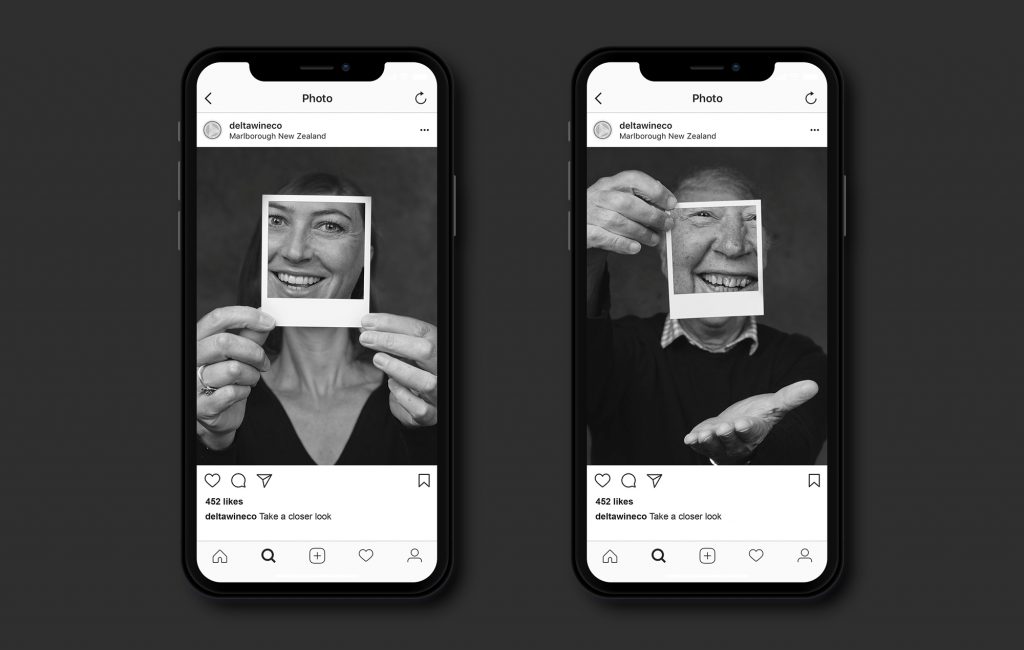
Delta Estate Wines embrace social media to connect with consumers in a real and emotive way, further enhancing the authenticity of their brand.
Related Articles
Building A Brand: Creating A Brand Development Strategy
There is no doubt that we have emerged from the widespread disruption of the pandemic into a new reality – one where the consumer is king. Power has well and truly shifted away from companies as customer choice increases exponentially through online marketplaces. The popularity of food delivery apps and e-commerce platforms has led customers to expect convenience and quality above all else, while social media and online reviews can instantly make or break the reputation of a brand…
TAGS

